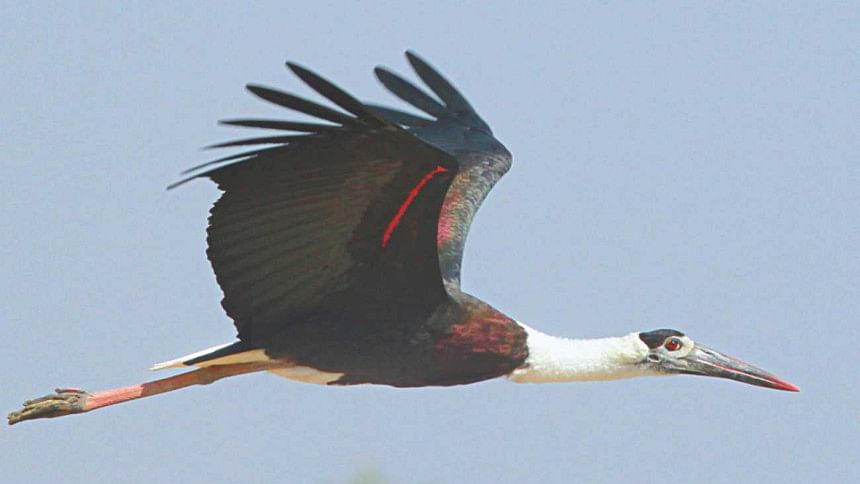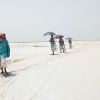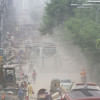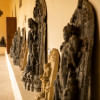Nature Quest: The bird land

Rajshahi has an impressive bird-habitat quite unrivalled by any in other cities or towns. In the dry season, anyone can reach this delightful spot just by crossing the shallow Padma River quietly flowing along the outskirts of Rajshahi city. Locals call the place Majher Char, meaning the middle island. As the river flow dries up, more and more mudflats and sandbars emerge here in the dry season from November to April. The newly emerging silt and sludge attract ducks, geese, storks and even raptors. These are all rather large and familiar birds, the population of which has been falling all over the world. Many of these birds have become very rare indeed in Bangladesh.
It is not clear why so many species of rare birds flock to this particular waterfront in Rajshahi and not elsewhere. We guess that, in spite of endless plundering, this place still retains enough natural properties to support these birds. An Asian Wooly-neck stork has been the rarest bird recently spotted there. Even for a stork, the bird is really big, robust and a bit bizarre.The stunning red eyes, black eye-lashes and fluffy white neck easily distinguish it from other storks. An unearthly vermilion wash on the blackish back, wings and the tip of the bill make it look like a painting of the most fanciful artist. It is a globally vulnerable bird and, not surprisingly, very rarely seen in Bangladesh.
Besides the Wooly-neck stork, the bird-lovers of Rajshahi have recently found two equally rare birds here, the Black-necked Stork and the Painted Stork. In Bangladesh, these storks have only been infrequently spotted in far-off places like the haors and the coastal islands. It is a rare treat to see these gems at a riverbank by the crowded Rajshahi city. For several years the riverbank has been famous for frequent visitations by Black Storks in winter. It has also been inhabited by the Asian Openbill, the only stork perennially living in Rajshahi district. This winter, therefore, the tally of storks seen in Rajshahi has risen to five species, an extraordinary assemblage of storks never witnessed anywhere in Bangladesh before.
With so many celebrity-storks at the riverbank, the other dazzling visitors like the Bar-headed Goose, Ruddy Shelducks, Red-crested Pochards, Booted Eagles, Long-legged Buzzards etc. have been reduced to mere footnotes. Otherwise, any one of these elegant birds could rightly have attracted the attention of bird-lovers of the country. Majher Char has already been famous as the only site in Bangladesh where two species of the Thick-knees occur, namely the Great Thick-knee and the Indian Thick-knee. A small band of bird-researchers have recently ringed a very rare Spotted Bush Warbler here and reported sighting of an unidentified francolin which is assumed to be either Grey Francolin or Swamp Francolin, both considered extirpated in Bangladesh since the middle of the 20th century.
The administration as well as the civil society of Rajshahi city had been quite unaware of this unique bird-land and unmindful of the need to conserve any natural endowments at all. A part of Majher Char and adjacent islands are cultivated by poor farmers and the natural vegetation of the rest is cut, crushed or burned at will by assorted pillagers. The site has clearly been left to the mercy of the squatters, the scavengers and the plain greedy people. Very recently a few amateur bird-photographers of the city have turned the spotlight on this place by posting photographs of rare birds in the social media. A place where five species of storks care to stroll will be considered well worth conserving anywhere in the world. In Bangladesh, it cries out for immediate steps for protection against degradation and rehabilitation of some of the lost natural properties.

 For all latest news, follow The Daily Star's Google News channel.
For all latest news, follow The Daily Star's Google News channel. 








Comments